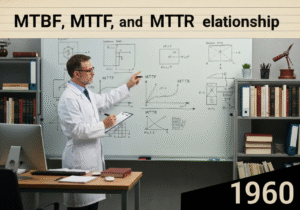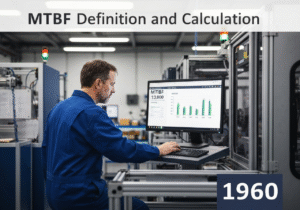Per calcolare l'esposizione di un lavoratore alle vibrazioni mano-braccio.
- Metodologie: Clienti e marketing, Economia, Progettazione del prodotto
Calcolatore delle vibrazioni mano-braccio (HAV)

Calcolatore delle vibrazioni mano-braccio (HAV)
- Impatto ambientale, Ergonomia, Scienze della salute, Fattori umani, Ingegneria dei fattori umani (HFE), Gestione del rischio, Sicurezza, Analisi delle vibrazioni
Obiettivo:
Come si usa:
- Strumento che calcola l'esposizione giornaliera di un lavoratore alle vibrazioni prodotte da utensili elettrici e altre attrezzature. Viene utilizzato per garantire che i livelli di esposizione rientrino nei limiti di sicurezza e per identificare i lavoratori a rischio di sindrome da vibrazioni mano-braccio (HAVS).
Professionisti
- Contribuisce a proteggere i lavoratori dai rischi per la salute derivanti dalle vibrazioni; fornisce una misura quantitativa dell'esposizione.
Contro
- Richiede dati accurati sui livelli di vibrazione e sui tempi di esposizione; può essere complesso da usare.
Categorie:
- Ergonomia, Gestione del rischio
Ideale per:
- Valutazione del rischio di sindrome da vibrazioni mano-braccio per i lavoratori che utilizzano utensili elettrici.
Il calcolatore delle vibrazioni mano-braccio (HAV) è uno strumento importante in settori come l'edilizia, l'industria manifatturiera e la silvicoltura, dove i lavoratori utilizzano frequentemente strumenti manuali che provocano vibrazioni, come trapani, smerigliatrici e seghe. Questa metodologia è particolarmente preziosa durante le fasi di pianificazione e valutazione dei programmi di sicurezza sul lavoro, consentendo ai dirigenti e ai responsabili della sicurezza di valutare le attrezzature e le pratiche esistenti e di implementare nuove strategie per ridurre i rischi associati all'esposizione alle vibrazioni. Le organizzazioni possono trarre vantaggio dal calcolatore HAV misurando e monitorando quantitativamente l'esposizione alle vibrazioni nel corso del tempo, il che aiuta a rispettare le normative stabilite dalle istituzioni per la sicurezza sul lavoro, come l'Health and Safety Executive (HSE) nel Regno Unito o l'Occupational Safety and Health Administration (OSHA) negli Stati Uniti. I dipendenti che utilizzano utensili vibranti devono essere istruiti sui rischi e sulle pratiche di utilizzo sicuro, mentre il monitoraggio regolare dei livelli di esposizione può portare a interventi proattivi, come la limitazione della durata di utilizzo dell'utensile o l'introduzione di utensili alternativi progettati con livelli di vibrazioni inferiori. È consigliabile coinvolgere professionisti della salute sul lavoro, ergonomisti e ingegneri della sicurezza durante la fase di analisi, in quanto possono interpretare i dati e raccomandare dispositivi di protezione individuale (DPI) o miglioramenti ergonomici adeguati. L'attuazione di tali misure non solo salvaguarda la salute dei lavoratori, ma può anche determinare un aumento della produttività e del morale, riducendo i costi associati alle richieste di risarcimento dei lavoratori e alle giornate lavorative perse a causa dell'HAVS.
Fasi chiave di questa metodologia
- Identificare gli strumenti e le attrezzature utilizzate dal lavoratore.
- Raccogliere i dati sulle emissioni di vibrazioni dalle specifiche del produttore o da database affidabili relativi a ciascun utensile.
- Misurare la durata dell'esposizione per ogni strumento durante la giornata lavorativa.
- Calcolare l'esposizione giornaliera alle vibrazioni utilizzando i dati di vibrazione acquisiti e il tempo di esposizione.
- Confrontare i valori di esposizione calcolati con i limiti di esposizione stabiliti (ad esempio, dalla norma ISO 5349).
- Determinare il rischio per ciascun lavoratore in base all'esposizione calcolata e al valore limite di soglia.
- Attuare misure di controllo o raccomandazioni per ridurre l'esposizione alle vibrazioni in caso di superamento delle soglie.
Suggerimenti per i professionisti
- Integrare il monitoraggio dell'esposizione in tempo reale per rilevare i livelli di vibrazione istantanei durante l'uso degli utensili, consentendo un'analisi più precisa dei dati e una gestione proattiva dei rischi.
- Utilizzare un approccio a più livelli nella valutazione del rischio di HAV, incorporando valutazioni ergonomiche e feedback del personale per identificare gli strumenti e le attività ad alta esposizione alle vibrazioni.
- Calibrare regolarmente i dispositivi di misurazione e fare un controllo incrociato dei dati rispetto agli standard del settore per garantire la conformità e migliorare l'accuratezza delle valutazioni HAV.
Leggere e confrontare diverse metodologie, raccomandiamo il
> Ampio archivio di metodologie <
insieme ad altre 400 metodologie.
I vostri commenti su questa metodologia o ulteriori informazioni sono benvenuti su sezione commenti qui sotto ↓ , così come tutte le idee o i link relativi all'ingegneria.
Contesto storico
1959-11
1960
1960
1960
1961
1968
1974-11-15
1950
1960
1960
1960
1960
1963
1970
1980
(se la data non è nota o non è rilevante, ad esempio "meccanica dei fluidi", viene fornita una stima approssimativa della sua notevole comparsa)














Post correlati
Programma di produzione principale (MPS)
Personalizzazione di massa
Imbuto di marketing
Audit di marketing
Indice MAPO (Movimento e assistenza dei pazienti in ospedale)
Pianificazione delle risorse di produzione (MRP II)